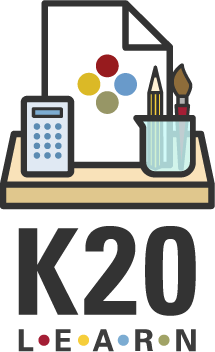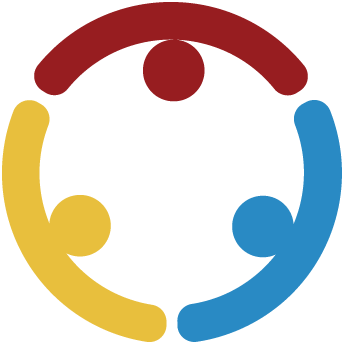Summary
In this session, participants will examine how early college visits impact middle school students. Participants will discuss research on the impact of early college visits and explore online resources available on the LEARN website. Participants will use this knowledge to develop plans for implementing campus visits at their school sites that address opportunities for or barriers to campus visits. To conclude the session, participants will reflect on the knowledge they gained.
Essential Questions
Why do campus visits make sense for middle schoolers?
Snapshot
Engage
Participants activate their understanding of the impacts early college visits have on middle school students.
Explore
Participants discuss research and data surrounding middle school campus visits.
Explain
Participants will explore 7th- and 8th- grade campus visit resources on the K20 LEARN website.
Extend
Participants develop an implementation plan for campus visits using the resources they found on the K20 LEARN website.
Evaluate
Participants reflect on what they learned about implementing middle school campus visits.
Materials List
Presentation Slides (attached)
The Importance of Postsecondary Campus Visits Research Brief handout (attached; one per participant)
Campus Visit Data handout (attached; one per participant)
I Notice, I Wonder Chart handout (attached; one per participant)
Implementation Plan handout (attached; one per participant)
Blank paper (one per group)
Sticky notes (one per participant)
Learning Objectives
Examine how early exposure to college campuses influences middle school students’ aspirations and academic motivation.
Assess online resources for supporting early college awareness and determine how to integrate them into specific school or program settings.
Engage
5 Minute(s)
Use the attached Presentation Slides to guide the session. Display slide 2 and introduce the session to the participants. Use slides 3–4 to introduce the essential question and learning objectives.
Organize participants into small groups and give a piece of blank paper to each group. Move to slides 5–6 and introduce participants to the Round Robin instructional strategy. Tell participants to work together to create a list of responses that answer the prompt on the slide: “What do middle schoolers think of when they hear “college”?
Have participants begin the first round and start the 1 minute timer on the slide. Lead participants in 2–3 rounds, restarting the timer for each round, then have small groups share out their lists with the whole group.
Explore
10 Minute(s)
Pass out the Research Brief and Campus Visit Data handouts to each participant. Transition to slide 7. Tell participants that the data was collected from 7th- and 8th-grade students of the classes of 2029 and 2030 after those students attended a campus visit to either a 2-year or 4-year institution from August 2024 to April 2025.
Distribute one copy of the I Notice, I Wonder Chart handout to each participant. Introduce participants to the I Notice, I Wonder instructional strategy. Tell them they should use the strategy to explore research related to early exposure to college campuses and data from students about their level of knowledge about college. Explain that participants should work individually to write down things they notice, or observations, and things they wonder, or questions they have, about the research and data.
Have participants share out their findings with their small groups. Once all small groups have finished sharing, invite volunteers to share out with the whole group.
Explain
10 Minute(s)
Transition to slide 8 and direct participants to the K20 LEARN website. Introduce participants to the Middle School Campus Visits Collection and have them view the four middle school resources, including 7th Grade Campus Visit Companion Activity: What Jobs Need What Education? and 8th Grade Campus Visit: Connecting Career Dreams to Postsecondary Education. Have participants take note of points of interest or questions they have as they look through the resources. Begin the 7 minute timer on the slide.
Display slides 9 and introduce the Mingle instructional strategy. Play music and have participants walk randomly around the room. Stop the music and have participants pair up with someone near them. Have them discuss interesting points or questions from the campus visit resources with their partners. Repeat this process 1–2 times if time permits.
Extend
15 Minute(s)
Display slide 10 and pass out the Implementation Plan handout to each participant. Explain to participants that they should use the resources they read on the K20 LEARN website and their understanding of the context of their schools to develop implementation plans. Have participants work with members of their school teams to complete the handout and develop their plans.
Evaluate
5 Minute(s)
Display slide 11 and pass out one sticky note to each participant. Introduce participants to the How am I feeling? What am I thinking? instructional strategy. Have them draw a line down the center of their sticky notes. Have them write or draw how they are feeling after the session on one side. Have them write or draw what they are thinking on the other side. If time permits, invite participants to share what they wrote on their sticky notes.
Research Rationale
Research shows a correlation between early college campus visits and an increase in attending college (Smith et al., 2022).
Resources
Kim, S., Bowman, N. A., Ingleby, L., Ford, D. C., & Sibaouih, C. (2021). Promoting educational success: Which GEAR UP services lead to postsecondary enrollment and persistence? Educational Policy, 35(1), 101–130. https://doi.org/10.1177/0895904818813301
Ma, J., Pender, M., & Welch, M. (2016). Education pays 2016: The benefits of higher education for individuals and society. College Board.
Mark, H. & Nurius, P. (1986). Possible selves. American Psychologist, 41(9), 954.
Oyserman, D., Bybee, D., Terry, K., & Hart-Johnson, T. (2004). Possible selves as roadmaps. Journal of Research in Personality, 38(2), 130–149.
Improving college access and completion for low-income and first-generation students: The role of college access and success programs testimony provided to the Subcommittee on Higher Education and Workforce Training, 114th Congress. (2015) (Testimony of Laura Perna). https://repository.upenn.edu/server/api/core/bitstreams/c8217985-17bb-42c8-8059-abe4fd434d76/content
K20 Center. (n.d.). How am I feeling? What am I thinking?. Strategies. https://learn.k20center.ou.edu/strategy/187
K20 Center. (n.d.). I notice, I wonder. Strategies. https://learn.k20center.ou.edu/strategy/180
K20 Center. (n.d.). Mingle. Strategies. https://learn.k20center.ou.edu/strategy/53
K20 Center. (n.d.). Round Robin. Strategies. https://learn.k20center.ou.edu/strategy/2183
K20 Center. (2021, September 21). K20 Center 1 minute timer [Video]. YouTube. https://www.youtube.com/watch?v=6ilD555O_RE
K20 Center. (2021, September 21). K20 Center 7 minute timer [Video]. YouTube. https://www.youtube.com/watch?v=gWwvdLxwV9c
Smith, M. C., Gosky, R. M., & Li, J. T. (2022). Campus visits as predictors of postsecondary enrollment in low-income, rural school districts. Journal of College Access, 7(1), 130–144.
Swanson, E., Kopotic, K., Zamarro, G., Mills, J. N., Greene, J. P., & Ritter, G. W. (2021). An evaluation of the educational impact of college campus visits: A randomized experiment. AERA Open, 7. https://doi.org/10.1177/2332858421989707
U.S. Department of Education. (2024, March). Gaining Early Awareness and Readiness for Undergraduate Programs (GEAR UP). https://www.ed.gov/grants-and-programs/grants-special-populations/economically-disadvantaged-students/gaining-early-awareness-and-readiness-for-undergraduate-programs-gear-up


